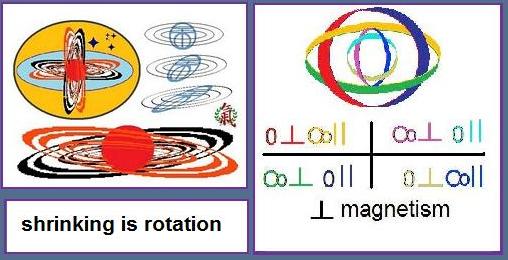In view of the progress since Euclid and that so many things seem to return to his system as grounding ideas where the universe on some scales and in general begins again at flatland, our efforts at reinventing the wheel should also be a project of going back to the drawing board so to speak or rather the sand in the popular and logical game of the day played by the villagers in ancient Greece. But we do tend to go back sometimes, I mean to the tools of theory a pencil and paper to which our modern abacus can only accept our signature as if our hands are shaking or we are the machines divided in our minds as to which way the axes go as our first model of reasoning pretends it is not an art or higher music between our brains and paper, and our hemispheres.
From this view the sense of the non-linear is a near chaos of that which we can make progress against the absurd. For in such reductionism in a simple compass of reasoning the absurdity indicates some disagreement with a postulate or an axiom of a system. Now, we take a general stance that in a sense what is not such a reductionist method must be part of the absurd or that which emerges from a system even if different in the physics but equally true in the math as when all Non-Euclidean geometries stand or fall together what declared a more progressive model emerges in its own exclusive unity against the old order of the absurd. Any new path is suspect in its emerging absurdity although sometimes such chaos can mysteriously find its flatland.
But the age old question of how we interpret the planes is not the occasion for observations on reduced or creative but absurd states of the philosophy and science. It is the slow dawning that even the seemingly trivial theorems of the flat geometry may lead to different outcomes where they are the beginnings of new secrets, as historically noted or yet to come. After all we play in the sandbox but do not always stop to reckon the sand that seeks its own scale of grain diameters. What then is matter? Fundamentally if it is about angles and polygons the n-gon has n-2 strait angles internally while externally the projected angles are 2n. No matter which side of the absurdity one is on this does speak for the inversion of operations, a cross between virial multiplication and a subtraction for division- thus even the doubling and halving of things apply on some point of a circle - so too the potential for a difference assuming some limit not just zero nor its absurd mirror inversion of infinity but what in the familar world is the all important kinetic and potential differences.
To erect a system of zero width strings as if some intrinsic flatness absolute or even to ground them into branes and that full of shadows of symmetry and higher dimensions is to reduce things to deep postulates and axioms but our thoughts remain in a flatland where higher space cannot measure unless we deal with the quasifinite aspects of our three and four space universe. To divide things abstractly into Euclidean ten dimensions tells us little more than our intellectual leap and reason things seem to have a direction or cause in time, reduced to experimental observations or added in the values such as of mass and gravity ad hoc by the general concepts of merged and non-Euclidean spacetime of which the real and expected laws work in the realm they are applied and work fairly well yet we have not reached that leap that begins our greater journey from the abstract grounding of four-space. Either way form most humans these ways to view space are equally difficult.
To imagine abstract motions and rest in a general Overworld is an exercise neither of reduction or absurdity. But such generalizations can of course be either or both. If we take the simple dualism as shadows of higher abstract structures and these of sufficient complexity to oscillate it is clear in the absolute integral count that the three forms of Euclidean structure that have analogs to endless dimensions, the tetrahedron, cube, and octahedron in space for example, that we find again a unity in the simplex and the three and four of things as the shapes shift between the other two in terms of the Euclidean volumes. Or ultimate transition in this age will be that we no longer can view the dark kinds of space and space tangible as separate things but as one thing only this time the logic is a little wider in how it tends to expand or contract the products and operations of the interlocking concepts of rudimentary and elemental symmetry.
* * * * *



No comments:
Post a Comment